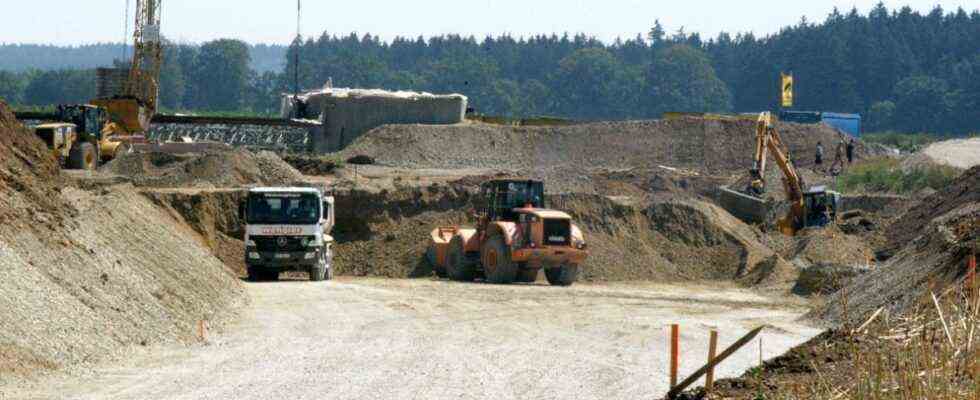The musketeers said all for one, all for one could be the motto under which several district municipalities now want to address the state government in Munich. The cities and municipalities around the B 304 specifically demand a reduction in traffic congestion without individual bypass roads being built for each location. Instead, the neighboring communities want supra-local solutions for the chronic traffic problem along one of the busiest traffic axes in the region.
According to the urgency of the problem, those involved want to choose their demands accordingly: “It will be a fire letter,” says Ebersberg’s mayor Ulrich Proske (independent) about the letter to the state government. Proske had already announced this at the citizens’ meeting the weekend before last. The residents “will demand that something be built that will benefit as many as possible”.
In the coming days, the letter will now be sent to the Ministry of Transport and perhaps also to the State Chancellery. The Ebersberg town hall chief will write it after he has agreed on the content with his office colleagues: “We all have a uniform awareness of the problem,” says Proske, who initiated the joint approach. On his initiative, the town hall chiefs of the municipalities along the federal road met for an initial consultation a good year ago. At the starting meeting on the Ebersberger side, in addition to the district town, there were also Vaterstetten and Steinhöring as well as Pfaffing, Edling and Wasserburg from the neighboring district of Rosenheim.
Even then, the direction of attack was clear: They wanted to create a joint traffic concept with the aim of deriving concrete relief from it. The model is the concept that has existed for the municipalities in the east of Munich since summer 2020. Various traffic problems at the interfaces between the districts of Munich, Ebersberg and Erding as well as possible solutions were examined. For example, where and what expansion of local public transport is possible and useful. Which roads could be expanded or rebuilt. Or how more traffic could be moved away from the streets through so-called bicycle corridors.
Even if not all of the suggestions and ideas in this concept are uncontroversial or easy to implement – for example, the expansion of the east airport bypass to the B 304 or a third S-Bahn branch via Parsdorf, Anzing and Forstinning – a similar concept should also apply to traffic to and about the B 304, this is the opinion of the participating municipalities. Their circle has now expanded, and the six participants at the first meeting have now been joined by the city of Grafing and the communities of Kirchseeon and Zorneding. Hohenlinden and Forstinning, where a large part of the traffic passes between A 94 and B 12 on the one hand and B 304 on the other, are also involved.
The main requirement of the municipalities is that there should be relief that is associated with as little land use as possible. The fact that a bypass can be built around every municipality from Vaterstetten to Wasserburg is unlikely not only from a financial point of view. In Ebersberg, a bypass in the east of the city for the state road has been under discussion for decades. However, the residents of the localities there are just as little enthusiastic about it as all Ebersbergers who appreciate the area for local recreation.
In Kirchseeon, too, where the southern bypass for the B 304 was decided by referendum in 2012, there is still criticism. In any case, it is not clear whether this route will be built. At the same time, the municipality had also registered a tunnel variant for updating the federal transport route plan. The criticism of the extensive southern bypass exists on the one hand for reasons of landscape and environmental protection. But also because that would mean that a good half of the Zornedingen bypass, which was only opened in 2007, would have to be demolished or at least reduced in size.
Such island solutions should no longer be there in the future, according to the municipalities united in the B 304 alliance: “We demand regional traffic planning,” says Proske, when a new road is built, “it should relieve several municipalities”. Supra-local could also mean expanding existing roads elsewhere so that some traffic flows around the district in the future.

